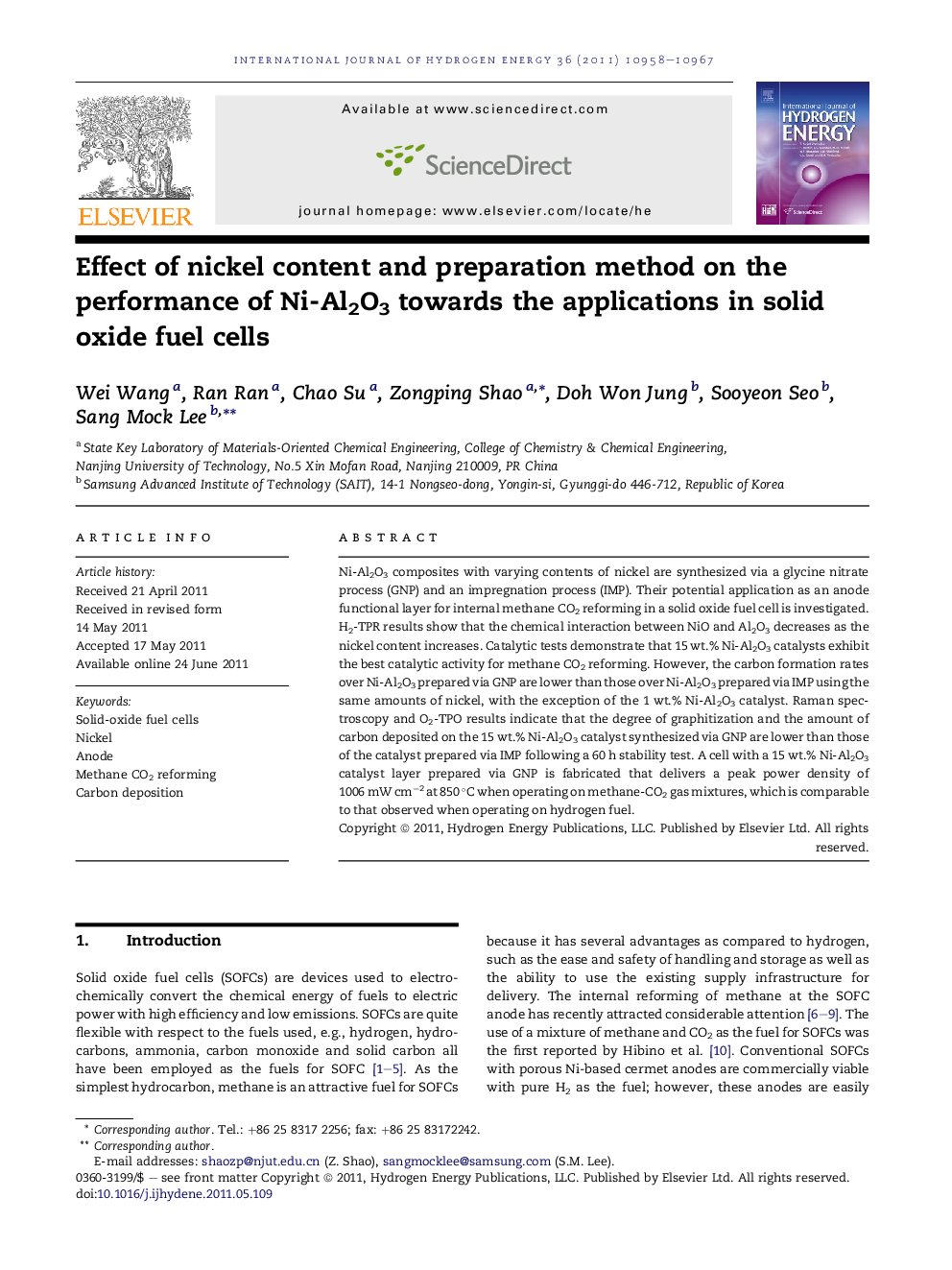| Article ID | Journal | Published Year | Pages | File Type |
|---|---|---|---|---|
| 1277565 | International Journal of Hydrogen Energy | 2011 | 10 Pages |
Ni-Al2O3 composites with varying contents of nickel are synthesized via a glycine nitrate process (GNP) and an impregnation process (IMP). Their potential application as an anode functional layer for internal methane CO2 reforming in a solid oxide fuel cell is investigated. H2-TPR results show that the chemical interaction between NiO and Al2O3 decreases as the nickel content increases. Catalytic tests demonstrate that 15 wt.% Ni-Al2O3 catalysts exhibit the best catalytic activity for methane CO2 reforming. However, the carbon formation rates over Ni-Al2O3 prepared via GNP are lower than those over Ni-Al2O3 prepared via IMP using the same amounts of nickel, with the exception of the 1 wt.% Ni-Al2O3 catalyst. Raman spectroscopy and O2-TPO results indicate that the degree of graphitization and the amount of carbon deposited on the 15 wt.% Ni-Al2O3 catalyst synthesized via GNP are lower than those of the catalyst prepared via IMP following a 60 h stability test. A cell with a 15 wt.% Ni-Al2O3 catalyst layer prepared via GNP is fabricated that delivers a peak power density of 1006 mW cm−2 at 850 °C when operating on methane-CO2 gas mixtures, which is comparable to that observed when operating on hydrogen fuel.
► Ni-Al2O3 prepared by GNP showed better catalytic activity and stability than IMP. ► Ni-Al2O3 prepared by GNP also presented better coking resistance than IMP. ► The 15 wt.% Ni-Al2O3 showed best catalytic activity for both GNP and IMP methods. ► The cell with this catalyst layer delivers high power output operating on CH4–CO2.
